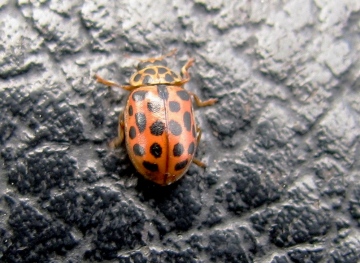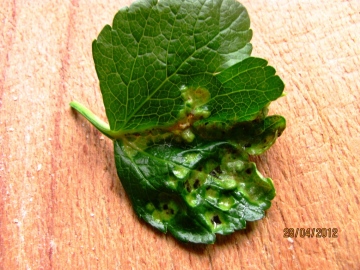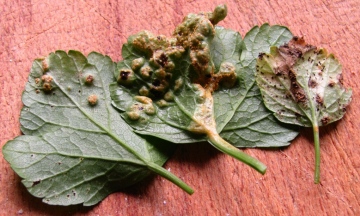Mary has gripped me off, as they say in the ornithological trade, as it is now April 28th and I still have not heard a Cuckoo. It doesn't really surprise me as each spring hope springs eternal but each year most migrants seem to arrive in smaller numbers than the one before. Studies suggest that Cuckoos do not parasitize small birds at random but that each bird specialises in certain species; thus there are Meadow Pipit Cuckoos, Reed Warbler Cuckoos, Dunnock Cuckoos etc etc. Perhaps for this reason they are doing well in parts of Scotland while in a county like Essex you tend to find more in wetland areas, which are largely on the coast, as this is where Reed Warblers and Meadow Pipits are to be found. Inland, they are a scarce bird in many areas. It is probably all down to the way we farm. In the past few decades virtually every last weed has been eradicated from arable fields and many of the insects that fed there - not just the harmful species but the harmless and beneficial ones as well - have been decimated by insecticides. The birds were bound to follow and they have. Don't visit most arable farms unless you are into counting Wood Pigeons! As for this year, my sponsored Cuckoo, Chris, one of five radio tagged by the BTO last spring, is still loafing around in northern Italy, deterred from moving back to Norfolk by the hostile weather. Can't say I blame him!
Still, it's not all doom and gloom, just mostly! Friday morning provided the sunniest and warmest few hours of the week and were spent helping to carry out the first of this year's Breeding Bird Survey transects at Blue House Farm. There were a few Sedge Warblers singing, fresh in from the Sahel, a Cuckoo was heard (but not by me!), there were a dozen Swallows and House Martins hawking for insects over the marsh, and the first Lesser Whitethroat of the spring was rattling away in one of the hedgerows. The last named is likely to have moved through Cyprus on its way north from Africa, an island where it is estimated that up to a million small birds are slaughtered each year for the delicatessen trade. So much for EU regulations protecting them! There were even a few butterflies enjoying the sunshine, namely, two Green-veined Whites, a Peacock and an early Small Copper. On the same day last year there were 52 Green-veined, 18 Orange Tip, 9 Peacock and 2 Small White but temperatures were 3`C above average then, not 5`C below! We also found a Water Ladybird, a species which feeds on aphids in waterside vegetation.
 Finally to a subject I know very little about - plant galls. Some years ago I thought that it would be nice to introduce Alexanders from the coast to my garden at Ingatestone. Now I can't get rid of the ruddy stuff! It reproduces from seed in great abundance and seems able to regenerate from even a fragment of taproot left in the soil, a bit like the Dandelion! This year I noticed that several of the leaves on some plants were infested with pustules that I presume are some kind of gall. On consulting Margaret Redfern's and Peter Shirley's 'British Plant Galls' I find that there is but one species listed as being found on Smyrnium, namely, Puccinia smyrnii, which is caused by a rust. The description seems to match the photos I took, to whit, "both surfaces of leaves, and stems, blistered and thickened by spermogonia and yellow aecia, followed by dark brown telia on the undersides of leaves only". In case you were wondering, a sporangium is an organ that produces sporangiospores; an aecia an organ that produces aeciospores, and a telia is (correct) an organ that produces teliospores. Mary, you are into obscure fungi. Any idea if this is a valid ID? Or perhaps you know someone who does know?
Finally to a subject I know very little about - plant galls. Some years ago I thought that it would be nice to introduce Alexanders from the coast to my garden at Ingatestone. Now I can't get rid of the ruddy stuff! It reproduces from seed in great abundance and seems able to regenerate from even a fragment of taproot left in the soil, a bit like the Dandelion! This year I noticed that several of the leaves on some plants were infested with pustules that I presume are some kind of gall. On consulting Margaret Redfern's and Peter Shirley's 'British Plant Galls' I find that there is but one species listed as being found on Smyrnium, namely, Puccinia smyrnii, which is caused by a rust. The description seems to match the photos I took, to whit, "both surfaces of leaves, and stems, blistered and thickened by spermogonia and yellow aecia, followed by dark brown telia on the undersides of leaves only". In case you were wondering, a sporangium is an organ that produces sporangiospores; an aecia an organ that produces aeciospores, and a telia is (correct) an organ that produces teliospores. Mary, you are into obscure fungi. Any idea if this is a valid ID? Or perhaps you know someone who does know?
























